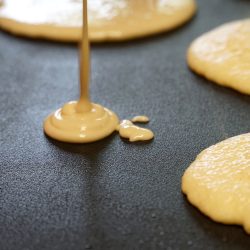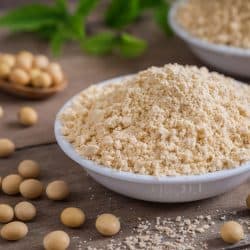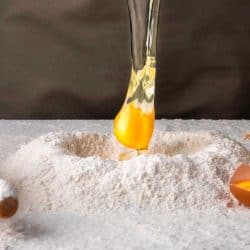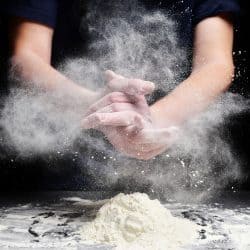Did you get a new KitchenAid and want to start using it right away? First time experiencing a recipe that involves folding? Folding is a pretty common baking technique for combining lighter, airy batters into heavier batters for baked goods such as angel food, mousses, and sponge cakes. Don't have a clue about folding? We've researched all about how to fold batters and will share what we've learned below!
Technically speaking, KitchenAid reports that you can gently fold in ingredients using your KitchenAid mixer on the lowest setting if you use the flat beater attachment. However, we do not recommend folding in the KitchenAid mixer for most delicate mixes. Folding is a very gentle technique and it is hard for the KitchenAid to perform this action as gently as needed.
What kinds of batter are you able to fold with your KitchenAid? What exactly does folding do to the batter? Why fold versus mixing or stirring? What happens when you mix or stir? If you continue reading, we will answer these questions and more down below!
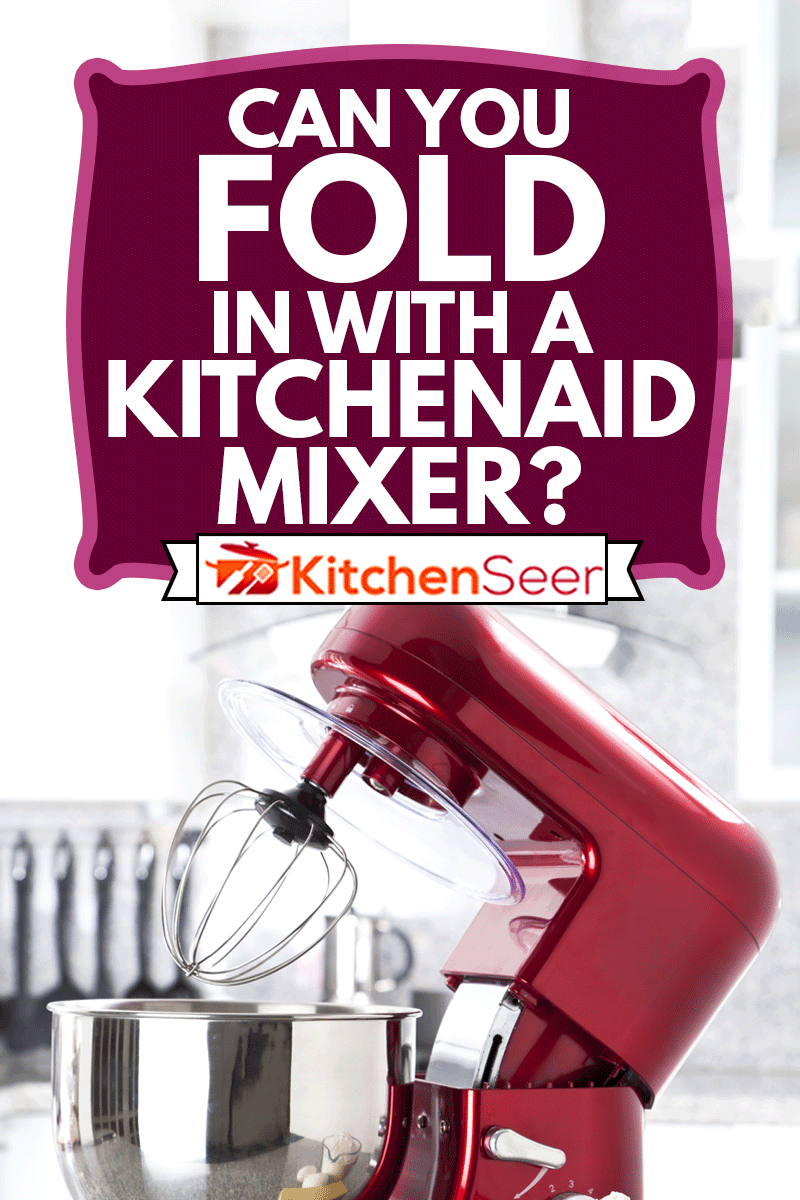
What is folding?
Folding is almost always exclusively mixing lighter airy batters (think whip cream) into a heavier dense batter. Folding is a slow mixing technique that combines the lighter and heavier ingredients without deflating your mixture, maintaining the air that is incorporated into the lighter mix. This helps to create light, airy, tall cakes and souffles.
To fold with a rubber spatula (which is the most common and widely used technique), follow the directions below:
- Always start by adding your lighter mixture into the heavy, not the other way around.
- You can incorporate a small amount of the lighter batter on the top of your heavy batter.
- Start with your spatula in the center of your mix.
- Cut down the mix, bringing the spatula straight to the bottom.
- Scrape the bottom of the bowl, then lift the spatula to the side of the bowl, continuing to the top.
- Once you reach the top, fold over.
- Continue until the batter is thoroughly mixed. Rotating the bowl and mixing on all sides.
This video is a helpful demonstration of the folding technique using a rubber spatula:
KitchenAid attachment for folding
According to the KitchenAid site, the flat beater attachment is used for everything from gentle folding, slow and fast mixing, cutting/rubbing in, creaming to beating. They state it is known as the "wooden spoon" of their attachments. However, from our research, most baking experts recommend folding by hand if it is anything besides folding flour into a butter batter.
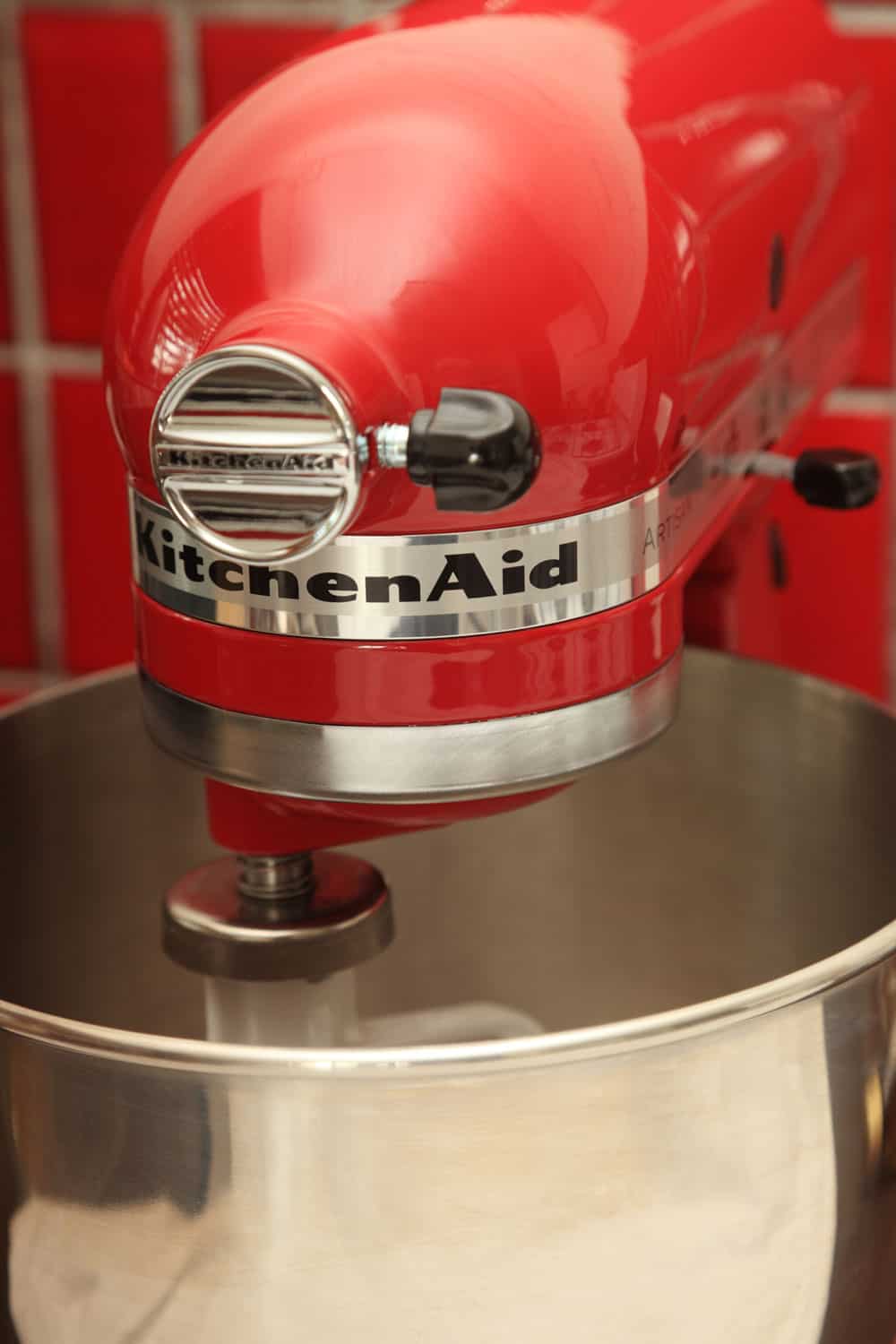
When it comes to folding flour into a butter-based mix, you can safely accomplish this type of folding technique with your KitchenAid mixer. You will want to follow the directions below:
- Cream butter and sugar together at low to medium speed.
- Beat in the eggs at low to medium speed.
- Once the butter, sugar, and eggs are thoroughly mixed and the sugar is dissolved, proceed to the next step.
- Alternate between adding in the dry ingredients and any other wet ingredients at the lowest speed, start and end with the dry. For instance, if you are adding flour and milk, start by adding 1/3 of the flour, then 1/3 of the milk, back to 1/3 of the flour, etc.
- Only mix until all the flour is thoroughly mixed into the batter, mixing the final bit of flour by hand.
Check out these rubber spatulas on Amazon.
What does it mean when a recipe says to fold in?
Folding is a delicate process, which is why most baking experts recommend performing this step by hand. Even on the lowest setting, the KitchenAid can be a bit too aggressive for this delicate technique.
You're typically mixing something very light and airy into a heavier ingredient until combined into a smooth mixture. The lighter mix is placed on top of the heavier mix, then folded. The folding action traps air bubbles into the mixture continuing consistency and allowing for the baked good to rise.
Why do you fold instead of mix?
The folding technique is used to mix the ingredients with as little disruption to the air pockets in the batter as possible in the lighter mix. Mixing is a much more aggressive technique of combining your ingredients. If you were to just mix the ingredients together, this would eliminate all the air pockets and prevent the baked good from rising the way it is intended to.
Does folding add air?
Have you ever baked something that came out rock hard? Or you were supposed to have a moist tall cake or souffle and instead it came out deflated and tough? Resembling a hockey puck instead of a cake? This was most likely due to too much gluten in the batter. Whipping, stirring, or mixing the batter deflates the batter and creates this gluten. Why is gluten bad for your cakes and souffles? Gluten gives structure to your baked goods. If you have too much gluten in your batter, then your baked good is likely to be extra tough.
The folding technique does not necessarily add air into the mixture. The aim of the technique is to gently mix the ingredients without deflating the mixture, preserving the air that was incorporated in the lighter batter. The technique does trap air pockets and break up the existing air bubbles into smaller air pockets. This results in lighter airy cakes that rise wonderfully.
What happens if you whisk instead of fold?
As with the mixing and stirring, if you whisk your batter, this is going to create excess gluten in your baked good again, resulting in a tough, hard cake. Whisking does add air to your mix but it will not be the correct consistency as with the folding technique.
A little-known baker's secret, however, is that you can perform the folding technique with a balloon-shaped whisk! Many seasoned bakers recommend this technique as you're sure to easily maintain the air in your batter. They report the whisk actually works better for this task because it combines the ingredients a lot faster without deflating the mix. The key is to fold with the whisk just as you would the spatula technique- slowly and gently. No aggressive mixing!
To fold with a whisk, follow the directions below:
- You will want to mix about 1/3 of the light mixture into the other ingredients to lighten them.
- Then use the same folding technique as with the flat spatula technique with the rest of the mixture, gently bringing the whisk from the bottom of the bowl to the side then folding over to the top. Tap out whatever excess batter has gotten stuck in the whisk.
Check out this balloon-shaped whisk on Amazon.
In Summary

We hope you have a better understanding of the folding technique and why it is important to perform this technique versus others in your recipes that call for it. The KitchenAid is a wonderful and powerful appliance that is ideal and perfect for many kitchen tasks, however for this particular technique more times than not it is best to leave folding to the human hands.
If you enjoyed this article, consider these for further reading:
KitchenAid Kneading Speed – What Should It Be?
When Should You Not Use Metal Mixing Bowls?
KitchenAid Accessories For Your Stand Mixer



